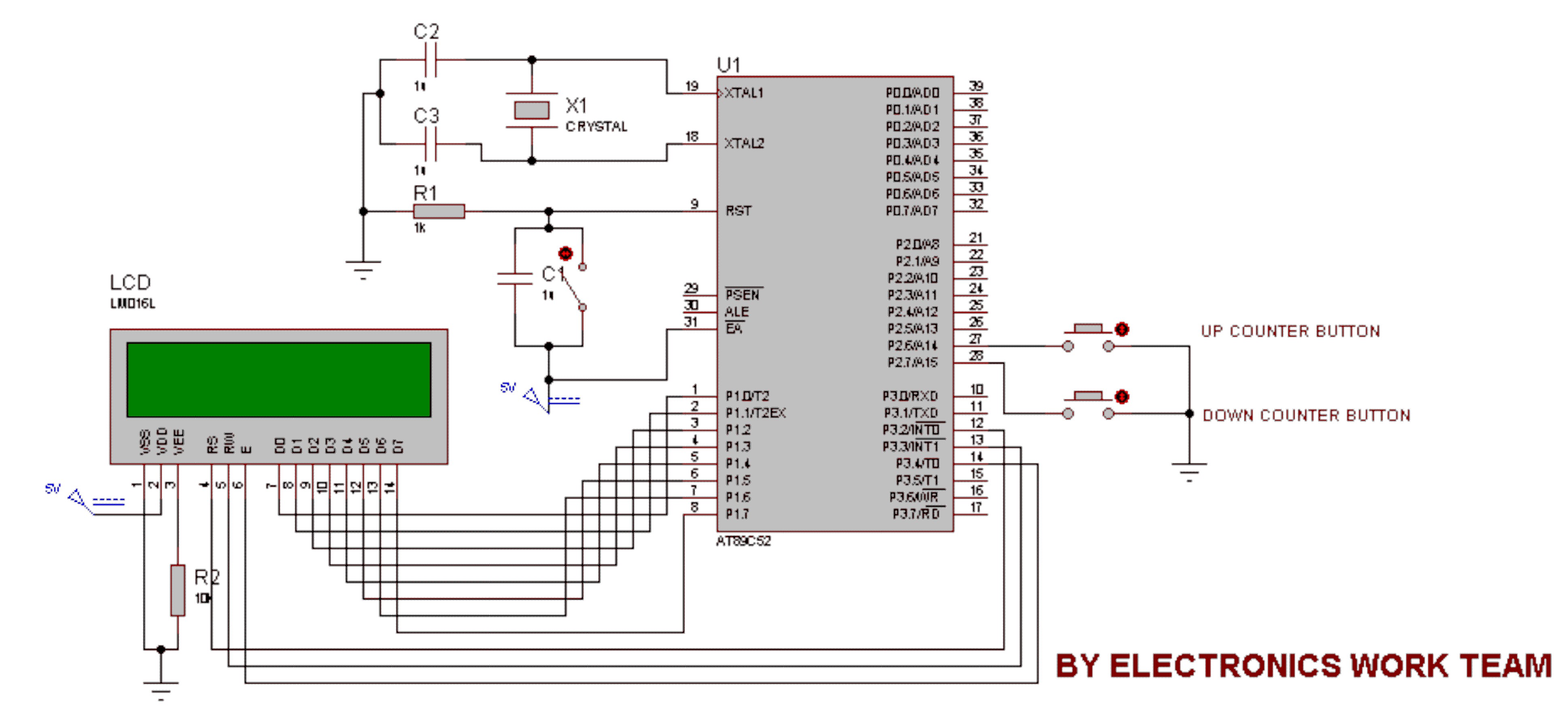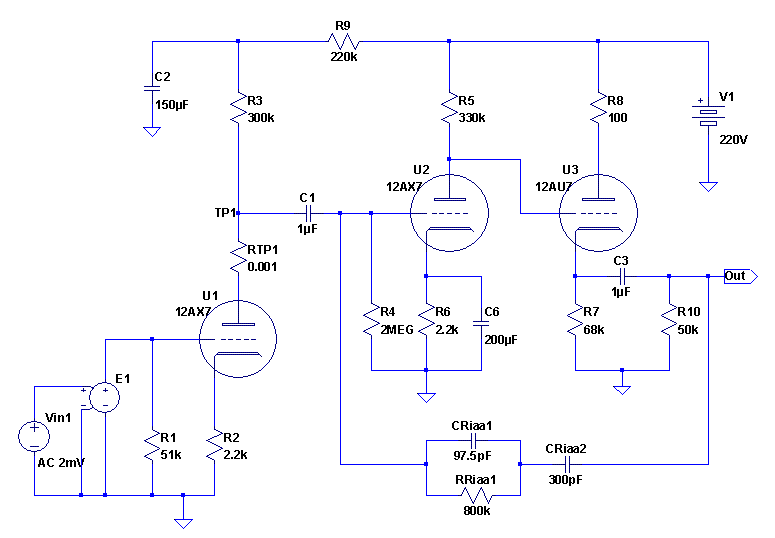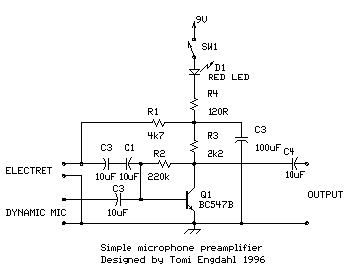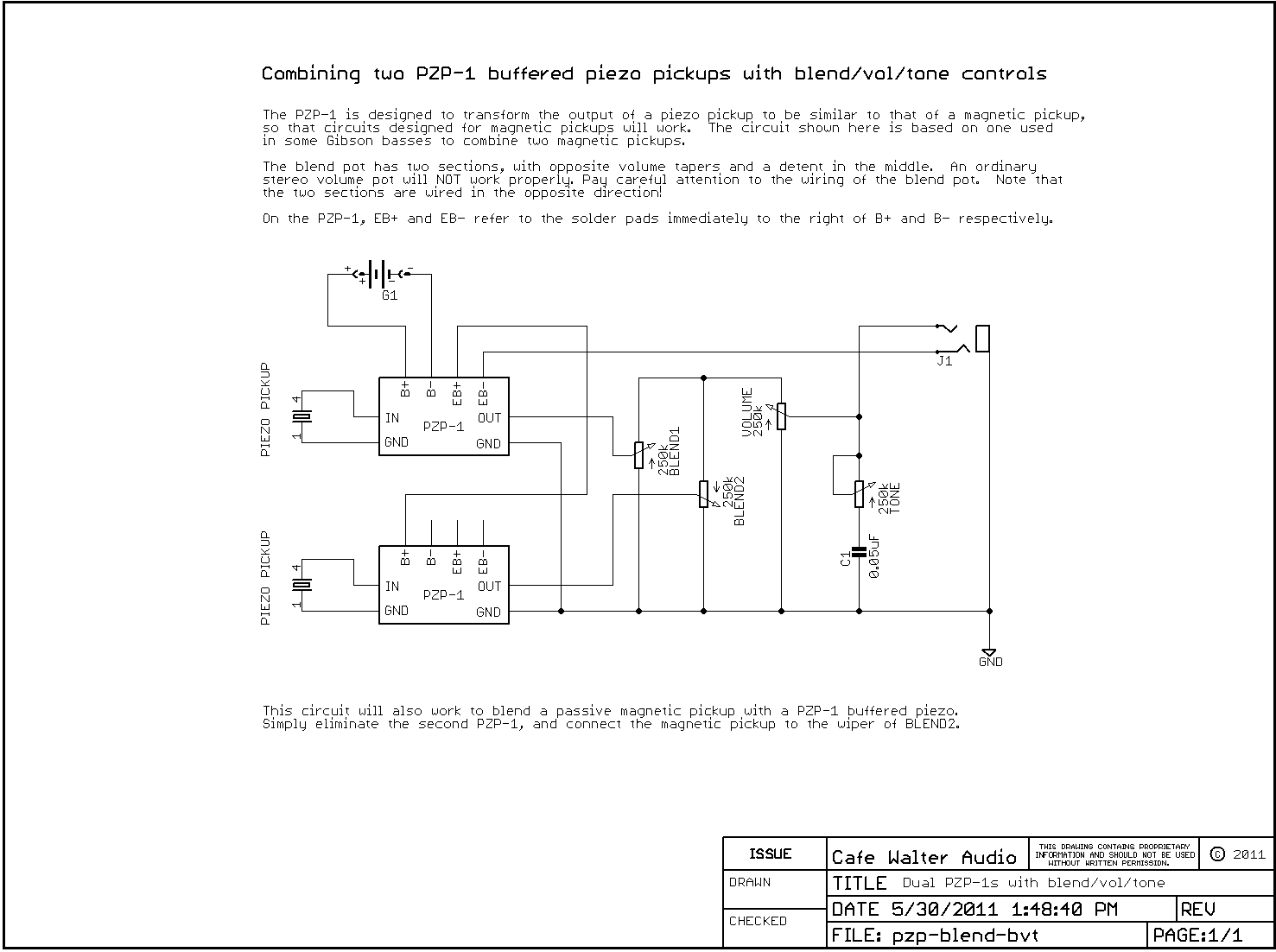
Pre MIC (microphone preamplifier) 2 CH by IC NE5532 or LF353
%2B2%2BCH%2Bby%2BIC%2B%2BNE5532%2Bor%2BLF353.jpg)
This is a microphone preamplifier circuit model 2 CH. The circuit utilizes integrated circuits NE5532 or LF353 to amplify the sound signal from a dynamic microphone, increasing the power level for subsequent input into a stereo power amplifier. This circuit is designed for high-quality sound performance due to the noise reduction capabilities of the integrated circuits. It requires a power supply of +12V and -12V. The variable resistors VR1 and VR2 are used to fine-tune the audio output. Additional details and the PCB layout can be found in the accompanying image.
The microphone preamplifier circuit, designated as a 2-channel design, is engineered to enhance audio signals captured by dynamic microphones. The selection of NE5532 or LF353 integrated circuits is pivotal in achieving low noise levels and high fidelity in sound reproduction. These components are known for their excellent performance in audio applications, providing a significant gain to the microphone signals before they are sent to a stereo power amplifier.
The circuit operates on a dual power supply, requiring +12V and -12V, which is essential for the proper functioning of the op-amps within the integrated circuits. This bipolar power supply configuration helps to maintain signal integrity and reduces distortion, ensuring that the amplified output maintains the quality of the original sound.
The inclusion of variable resistors, VR1 and VR2, allows for precise adjustments to the audio signal. These potentiometers can be used to control gain and tone, enabling users to customize the sound according to their preferences or specific application requirements. This feature is particularly beneficial in live sound environments or recording settings where sound characteristics may need to be tailored.
The overall design of the circuit emphasizes simplicity and effectiveness, making it suitable for various audio applications, including music production and public address systems. The printed circuit board (PCB) layout, referenced in the original description, provides a clear visual guide for assembly and helps to ensure that all components are correctly positioned for optimal performance. The combination of high-quality components and thoughtful design makes this microphone preamplifier a reliable choice for audio enthusiasts and professionals alike.This be Pre Mic circuit or Microphone preamplifier circuit model 2 CH. By this circuit uses integrated number circuit NE5532 or LF353. It perform enlarge sound signal from Dynamic Micro phone give the power goes up for subsequently submit to go to still stereo power amplifier circuit next. This circuit be of good quality good sound, because of use the integrated circuit decreases the noise, but should use the fire feeds +12V GND -12V with. The VR1 and VR2 perform fine decorate the sound. The detail is other and PCB see in a picture below. 🔗 External reference
The microphone preamplifier circuit, designated as a 2-channel design, is engineered to enhance audio signals captured by dynamic microphones. The selection of NE5532 or LF353 integrated circuits is pivotal in achieving low noise levels and high fidelity in sound reproduction. These components are known for their excellent performance in audio applications, providing a significant gain to the microphone signals before they are sent to a stereo power amplifier.
The circuit operates on a dual power supply, requiring +12V and -12V, which is essential for the proper functioning of the op-amps within the integrated circuits. This bipolar power supply configuration helps to maintain signal integrity and reduces distortion, ensuring that the amplified output maintains the quality of the original sound.
The inclusion of variable resistors, VR1 and VR2, allows for precise adjustments to the audio signal. These potentiometers can be used to control gain and tone, enabling users to customize the sound according to their preferences or specific application requirements. This feature is particularly beneficial in live sound environments or recording settings where sound characteristics may need to be tailored.
The overall design of the circuit emphasizes simplicity and effectiveness, making it suitable for various audio applications, including music production and public address systems. The printed circuit board (PCB) layout, referenced in the original description, provides a clear visual guide for assembly and helps to ensure that all components are correctly positioned for optimal performance. The combination of high-quality components and thoughtful design makes this microphone preamplifier a reliable choice for audio enthusiasts and professionals alike.This be Pre Mic circuit or Microphone preamplifier circuit model 2 CH. By this circuit uses integrated number circuit NE5532 or LF353. It perform enlarge sound signal from Dynamic Micro phone give the power goes up for subsequently submit to go to still stereo power amplifier circuit next. This circuit be of good quality good sound, because of use the integrated circuit decreases the noise, but should use the fire feeds +12V GND -12V with. The VR1 and VR2 perform fine decorate the sound. The detail is other and PCB see in a picture below. 🔗 External reference





